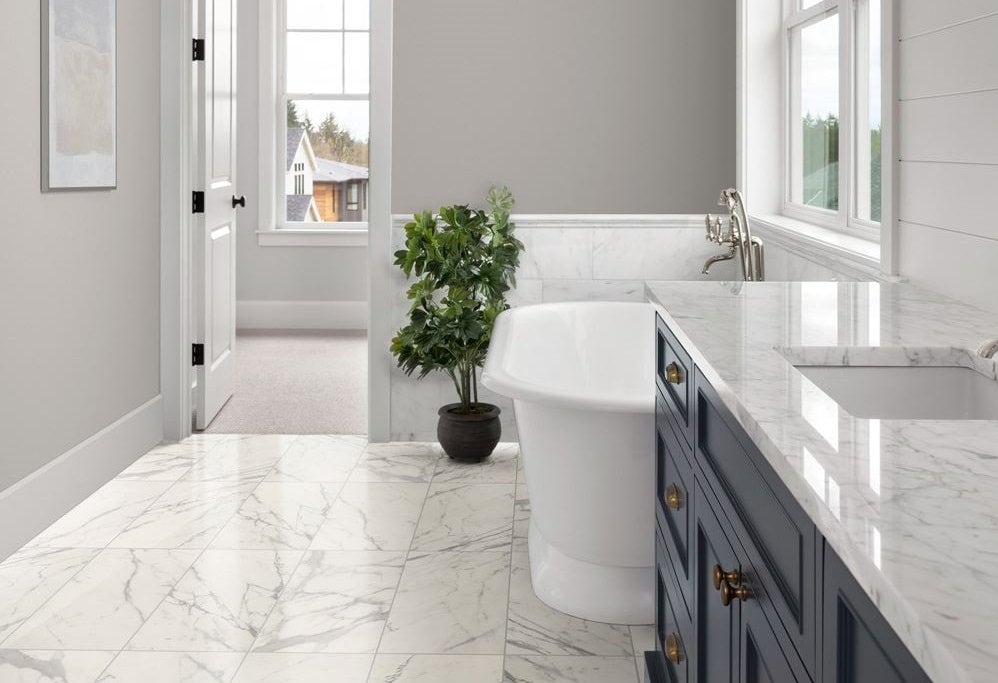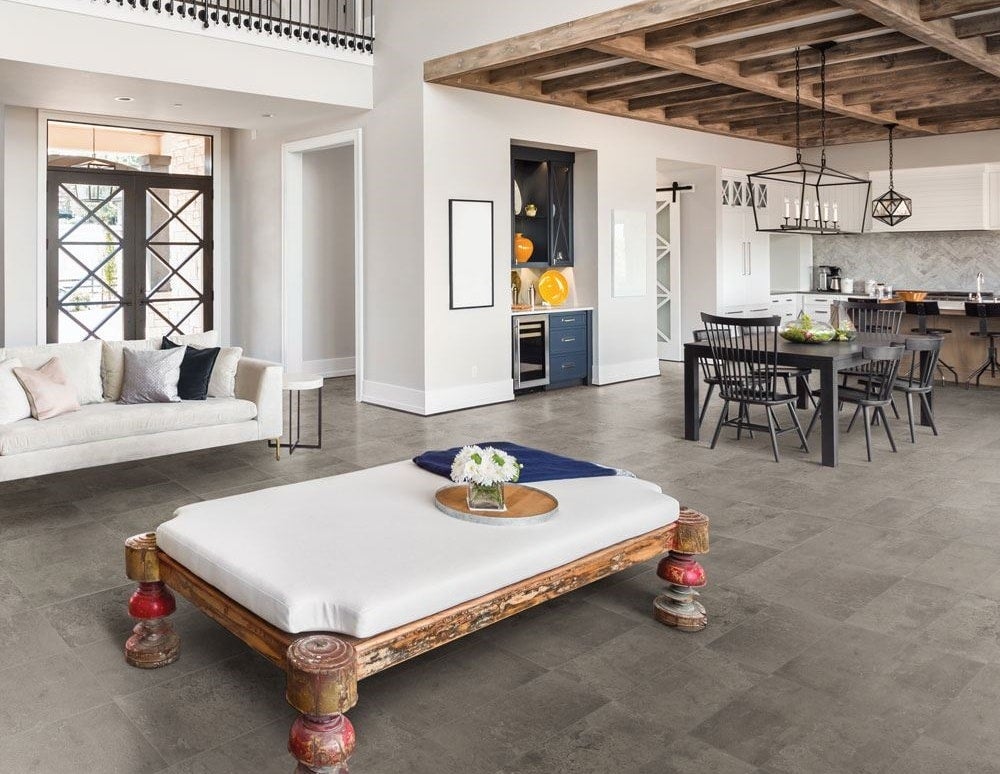If you’ve spent any time tile shopping recently, you may have found yourself scratching your head at some of the industry jargon you’ve undoubtedly encountered. We recently covered one of the most common questions customers have during their tile shopping journey, which is the differences between porcelain and ceramic tile. But there will be plenty of other esoteric terms that might have you feeling like you’re enrolled in a materials science class. Here are some explanations of three of the most common tile industry terms you’re likely to come across while surfing the web.
In our previous post about the differences between ceramic and porcelain tile, we briefly touched upon this concept. The water absorption rate of a tile is a way to quantify the water resistance of that particular model of tile in a standardized, objective way. The test works like this:
Five small fragments of a tile—usually just a few inches square and taken from the centers of the full-sized tiles—are baked in a lab oven until their weight no longer changes. Fragments are used to increase the amount of exposed porous surface area of the tile, while the baking process assures the testers that there is absolutely no residual moisture in the pores of the tile.
After baking, the starting weight of each fragment is recorded. The tile fragments are then boiled in water for five hours and then left to soak in water for another 24 hours. Once that time is up, the fragments are weighed again. The finished weight is compared to the starting weight and expressed as a percentage; that percentage is the tile’s water absorption rate.

The lower the water absorption rate, the more resistant to moisture a tile is. This is also one of the key defining characteristics of porcelain tile in comparison to ceramic tile. In order to be officially classified and sold as porcelain tile, The Tile Council of North America mandates that the product must be at or below a 0.5% water absorption rate. Ceramic tiles, in contrast, are not bound by any industry standards for water resistance. While some ceramic tiles do get down to just above a 0.5% water absorption rate, most are in the low single digits, but others can get up into the double digits. So while most ceramic tile still offers good water resistance, porcelain tile will be the better solution for areas that see high levels of water exposure. Interested in the finer details of the testing process? Read more in this article from the TCNA.
This is a term you’ll probably encounter on your tile shopping journey in a list of technical specifications for a particular tile model. Established by the Porcelain Enamel Institute, a trade organization that supports the development and use of porcelain across many industries, the PEI rating of a surface describes the hardness of a porcelain glaze. The harder the glaze, the more resistant to surface wear that tile is, and the better suited it will be for high-traffic areas of a home or business.
The PEI scale comprises 6 classes that fall on a scale of 0 to 5. At the low end would be completely unglazed tiles, with the high end reserved for the tiles with the toughest surface glaze. The most common household tiles will usually have a PEI rating of 3 or 4. Lower ratings don’t automatically designate a lower-quality tile, just one that shouldn’t be used in areas seeing lots of foot traffic. For instance, some high-end tiles may be designed to be used exclusively as a strong visual element on walls or backsplashes and simply were not constructed to deal with lots of wear.
| PEI Class | Recommended Applications |
| 0/NR | Technically “unrated,” these are unglazed tiles and are not suitable for any level of flooring use and should only be used in decorative wall applications where they will not encounter water. |
| 1 | Suitable only for use on walls in homes and some light commercial applications. Class 1 tiles will often be used in bathroom walls, tub/shower surrounds, and kitchen backsplashes. |
| 2 | This class is suitable for floor use, but only where the tiles will encounter very light traffic. Typical examples include bathrooms or formal living/dining rooms. |
| 3 | At the middle of the scale, most common floor tiles fall into this class. They’re built to handle average levels of foot traffic in residential applications, but are not suitable for commercial use. |
| 4 | Suitable for use in any area of the home and many light-to-medium-duty commercial applications. Class 4 tiles are good candidates for restaurants or hotel lobby floors. |
| 5 | The strongest level of tile glaze. Tiles at this level can be used for any residential applications and are even suitable for high-traffic commercial applications. But durability can come at a cost—tiles at this class often favor function over form and may not be the most attractive option. |
This term is used to describe the visual similarity between the surface glaze of a tile and its interior construction. A “through-body” tile will have a consistent tone throughout the thickness of the tile, all the way through the visible surface. Most porcelain tiles have a through-body construction, while most ceramic tiles typically will not. Ceramic tile is usually crafted with a method known as “color-body,” in which the surface design or glaze are a different shade than the rest of the tile body. Imagine each tile as a piece of cake. The through-body tile would be a chocolate cake with chocolate frosting, while the color-body tile would be a white vanilla cake with chocolate frosting.
What does this mean in practical applications? In daily use, there won’t be any noticeable difference between the two types of tiles. The major benefit of through-body only becomes apparent when the surface is chipped. If we go back to the cake example, imagine running a finger through the frosting of the chocolate cake. The results of your sneaking a taste probably won’t be visible except under close inspection. Now do the same thing with the vanilla cake, and the white dough underneath will likely alert the rest of your party that you’ve sampled the sweets. In the same way, a chip on the surface of a through-body tile will be much harder to notice from a typical viewing distance than a chip on a color-body tile.
If you expect your floors to need to endure abnormally high traffic or situations that may lead to chips, it may be a good idea to seek out products with a through-body construction while you’re tile shopping.

These were just three of the many mystifying terms you might encounter while perusing flooring products online. Whether you’re just beginning to consider what type of floors you might want to have installed in your home, or you’re already deep in the tile shopping process, Empire Today® is always here to help. From our award-winning customer service team to our free in-home consultations, Empire® is dedicated to helping you find the best floors for your home with as little hassle as possible.
Get the latest updates delivered to your inbox.